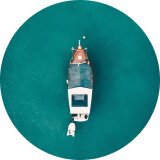Surfing in North Carolina
Surfing guide to North Carolina, USA
North Carolina has 3 main surf areas. There are 18 surf spots . Go explore!
Overview of surfing in North Carolina
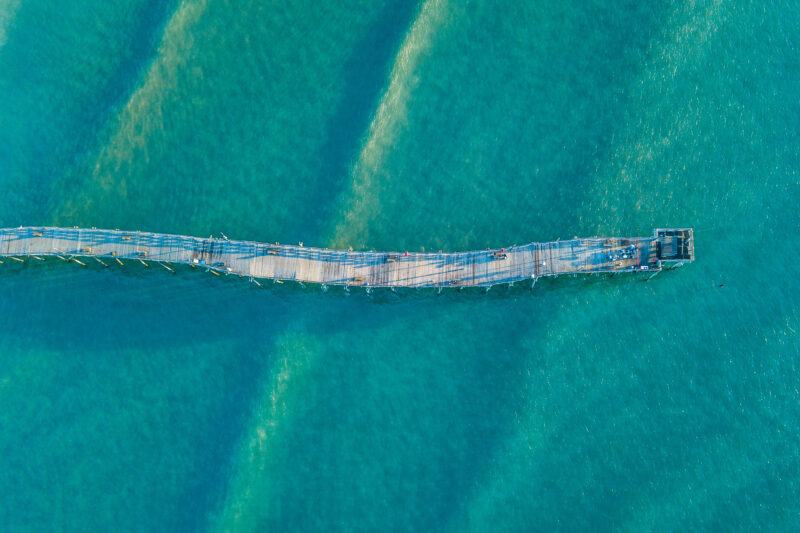
North Carolina may not be the first place surfers think of when they dream of world-class waves, but its coastline delivers some of the best surf on the US East Coast. Stretching more than 480 km, North Carolina’s beaches and barrier islands pick up powerful swells from the Atlantic, with the Outer Banks being the jewel of the region.
This is a coastline shaped by shifting sandbars, hurricane swells, and raw Atlantic energy. Waves can range from playful waist-high peelers to overhead, barreling beach breaks that rival California or Hawaii when conditions align. The state’s geography—especially Cape Hatteras jutting into the Atlantic—makes it a swell magnet, catching storms that miss other East Coast states.
Surfing here is adventurous and seasonal. Summer is mellow and beginner-friendly, while autumn brings hurricane swells and world-class conditions. Winter delivers powerful, frigid surf for committed locals, while spring offers a mix of both. Add in the region’s southern charm, fishing villages, lighthouses, and wild natural beauty, and North Carolina becomes one of the most underrated surf destinations in the United States.
Surf Regions in North Carolina
As the Old North State and a key part of the country of the United States’ east coast, North Carolina’s geography is as diverse as its surf. The state stretches from sea level at the Atlantic Ocean shoreline in the eastern coastal plain, which is characterized by low-lying land; the coastal plain consists of the Outer Banks and inland areas. Moving west, the state crosses the inner coastal plain and piedmont region. The eastern Piedmont is a region of rolling, forested hills that serves as a transition between the coastal plain and the mountains. Further west is the mountain region in the western part, including the Blue Ridge Mountains. The Western Piedmont acts as a transitional zone with ridges and hills between the inner coastal plain and the Blue Ridge Mountains. North Carolina’s major cities and cities like Raleigh, Charlotte, and Wilmington serve as gateways to the coast, while the state borders South Carolina to the south and Tennessee to the west. Toward the southwest, the landscape and coast change, with regional variations in wave energy and inland features. This unique landscape shapes North Carolina’s surf culture and makes it a standout destination on the East Coast.
Outer Banks (Cape Hatteras, Nags Head, Rodanthe, Buxton)
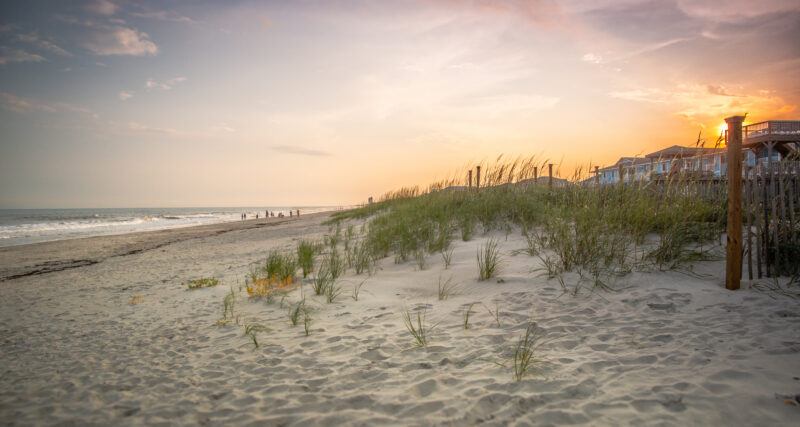
The heart of North Carolina surfing, the Outer Banks (OBX) are a chain of barrier islands famous for their powerful beach breaks, shifting sandbars, and expansive sand dunes. Cape Hatteras National Seashore is a prime location for surfing, known for its ideal wave conditions, offshore winds, and scenic beauty, making it a popular destination for surfers and visitors alike. The Atlantic Ocean and ocean currents, influenced by the Gulf Stream and warm Gulf Stream waters, play a major role in wave formation here, while the nearby continental shelf helps create a variety of quality surf breaks. Notable spots like Hatteras Island, Devil Hills, and Jennette’s Pier are renowned for their challenging waves and consistent surf, attracting both recreational and experienced surfers. This is where you’ll find the heaviest, most consistent surf in the state, including the iconic Cape Hatteras Lighthouse break.
Wrightsville Beach

Near Wilmington, Wrightsville Beach is a lively surf town with consistent waves, a strong surf community, and plenty of surf schools. It’s more accessible than the Outer Banks and a great place for learners.
Carolina Beach and Kure Beach

Just south of Wrightsville, these beaches offer consistent surf with a more laid-back vibe. They’re popular with locals and intermediate surfers
Crystal Coast (Emerald Isle, Atlantic Beach)
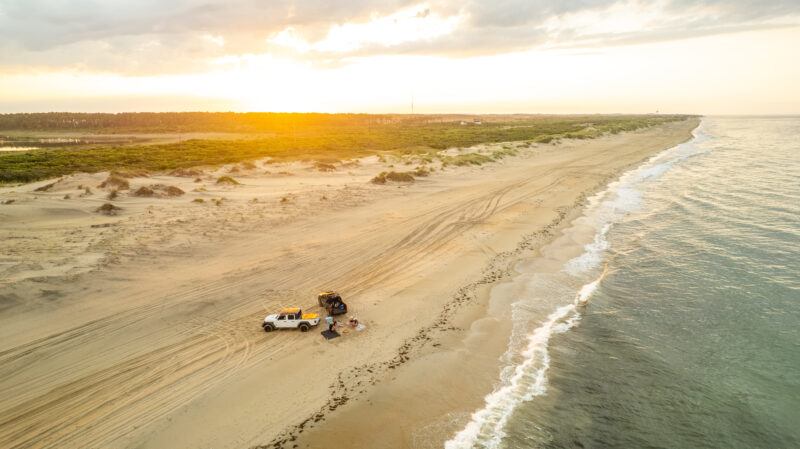
This region has fun, less-crowded waves with a mix of beach and jetty setups. The sand and gently curving shoreline, shaped by the Atlantic Ocean and its currents, contribute to the area’s unique surf scene. It’s not as consistent as the OBX but delivers when the swell direction is right.
North Topsail and Surf City
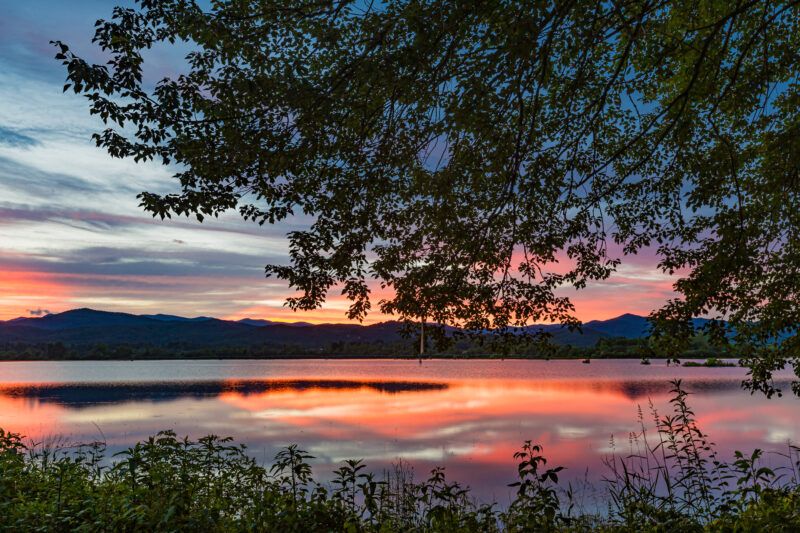
Between Wilmington and the Crystal Coast, these beaches are home to consistent sandbars that can fire during hurricane season. They’re less crowded than Wrightsville and offer a more relaxed atmosphere.
Getting there

The Outer Banks are best accessed via Norfolk International Airport in Virginia (about 2 hours from Nags Head). Raleigh-Durham International Airport is further inland, about 4–5 hours’ drive. Wilmington International Airport serves the southern beaches, including Wrightsville and Carolina Beach. North Carolina’s major cities and cities like Raleigh, Charlotte, and Wilmington serve as key gateways for surfers traveling to the coast.
Once there, a car is essential. The OBX stretches over 160 km, and surf spots are spread out. Driving over long bridges and along scenic highways is part of the surf adventure.
Crowds
Crowds are lighter than in California or Florida, but popular breaks like Wrightsville Beach or the Hatteras Lighthouse can get busy during prime swells. The Outer Banks offer miles of coastline, so with some exploration, you can often find empty peaks. Summer sees more tourists, while winter is reserved for hardcore locals.
Lineup Lowdown
Locals are proud of their breaks and protective of their communities, but the vibe is generally welcoming if you show respect. Standard etiquette applies: don’t drop in, wait your turn, and respect priority. At heavy OBX spots, experience is expected—locals know the sandbars and rips better than anyone.
Surf seasons and when to go
The best time of the year to surf in North Carolina
Surf Seasons and When to Go
Summer (June–August): Small, mellow waves dominate. Perfect for beginners, but flat spells are common. Hurricane season starts late summer, bringing potential for big swells.
Autumn (September–November): The prime surf season. Hurricane swells combine with offshore winds and shifting sandbars to produce world-class conditions. This is when the Outer Banks shine.
Winter (December–February): Cold, powerful surf with fewer crowds. Water temps drop to 8–12°C, requiring full winter rubber. Only committed surfers paddle out, but the waves can be epic.
Spring (March–May): A transitional season with fun, consistent surf and warming water. Not as big as autumn, but more user-friendly.
Water Temperatures and Weather
Water temps swing dramatically:
- Summer: 24–27°C (boardshorts or bikinis)
- Autumn: 18–24°C (spring suits or light fulls)
- Winter: 8–12°C (5/4 wetsuit, hood, gloves, booties)
- Spring: 14–20°C (3/2 or 4/3 full suit)
Air temps range from 5°C in winter to 30°C+ in summer. Hurricanes and nor’easters can make conditions unpredictable.
Can’t-Miss Surf Spots
The Outer Banks and Crystal Coast are home to a wide variety of surf breaks, ranging from mellow beach breaks for beginners to powerful, challenging waves that attract experienced surfers from across the East Coast.
Cape Hatteras Lighthouse (Outer Banks)
Located on Hatteras Island, this is the most famous wave in North Carolina. The shifting sandbar near the lighthouse produces powerful, barreling beach breaks that rival anywhere in the world when conditions align. Hatteras Island is renowned for its challenging waves, making it a central hub for advanced surfers.
Rodanthe Pier (Outer Banks)
A classic OBX spot with wedgy peaks breaking near the pier. It works well on different tides and is consistent during hurricane season. Nearby, Jennette’s Pier in Nags Head is also a popular surf and fishing location, known for hosting surfing competitions and outdoor activities.
Nags Head (Outer Banks)
Fun, consistent beach breaks with a mix of mellow peaks and heavier sandbars. Popular with locals and surf schools.
Devil Hills (Outer Banks)
A lesser-known spot in the Outer Banks, Devil Hills is notable for its challenging waves and attracts experienced surfers seeking demanding surf breaks.
Wrightsville Beach
The surf hub of southern NC, Wrightsville offers consistent beach breaks with a lively surf community. It’s perfect for learners and intermediates, with surf schools lining the beachfront.
Carolina Beach Pier
Known for its playful peaks and long rides, this is a favorite for intermediates. It’s less crowded than Wrightsville but still consistent.
Emerald Isle (Crystal Coast)
A scenic barrier island with fun beach breaks and fewer surfers. On the right swell, it delivers powerful, rippable waves.
Surf City
True to its name, Surf City has consistent beach breaks that light up during hurricane season. It’s relaxed, fun, and less crowded than other regions.
North Carolina surf travel guide
Find trips that fit a flexible lifestyle
Learning to Surf in North Carolina
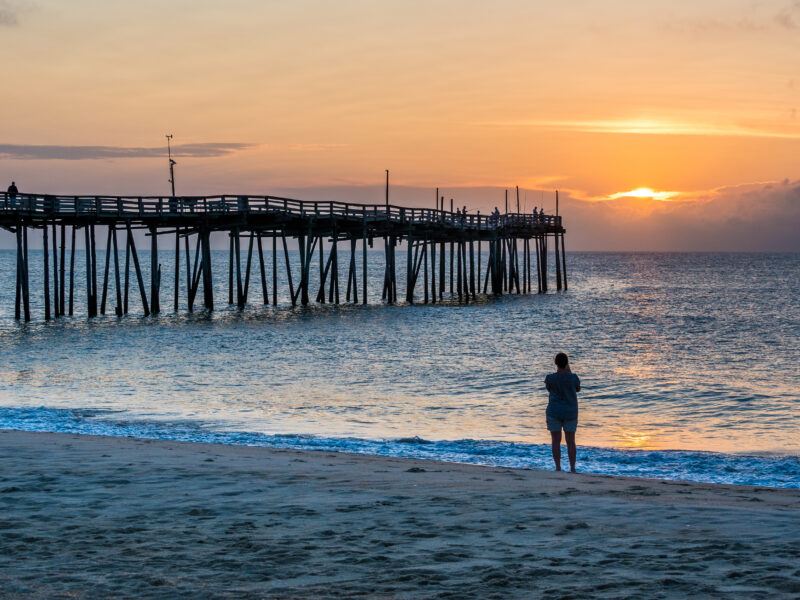
Wrightsville Beach and Nags Head are the best places for beginners, with sandy-bottom waves and numerous surf schools. Lessons cost AU$90–120 for group sessions and AU$150–200 for private coaching. Board rentals are around AU$40–60 per day. Summer is the best season for learners, with warm water and smaller, friendlier waves.
Safety and Etiquette
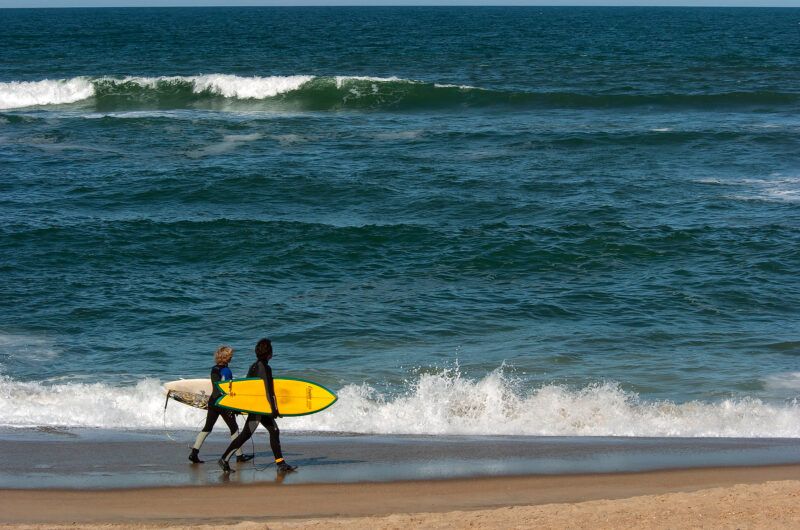
Shifting sandbars and strong rips are part of surfing in North Carolina. Hurricane swells can create powerful, dangerous surf, so paddle out only if you have experience. Winter requires full cold-water gear, and hypothermia is a real risk without proper wetsuits. Respect locals, respect priority, and know your limits.
Surf and Yoga Retreats
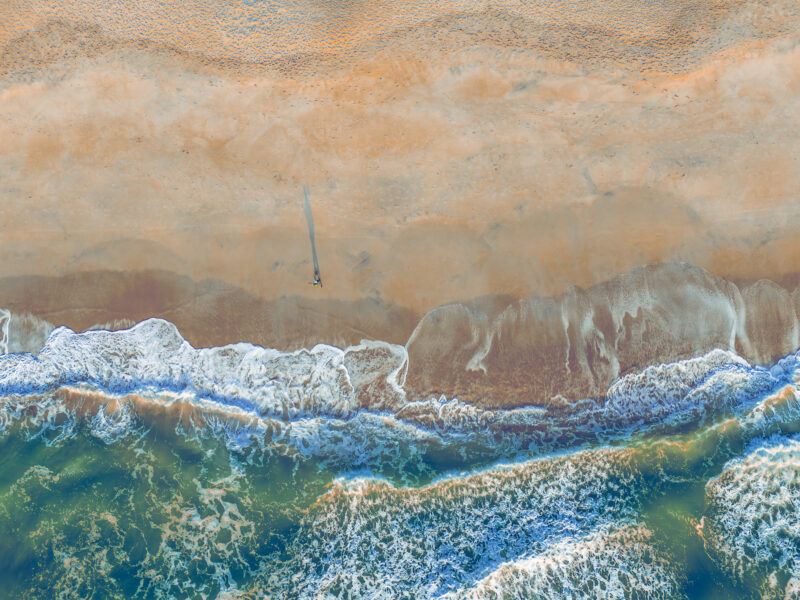
While North Carolina isn’t a Bali-style retreat hub, surf camps and yoga-surf packages exist, especially in the Outer Banks and Wrightsville. These retreats often include accommodation, lessons, daily yoga, and meals, costing around AU$1,200–2,500 per week.
Accommodation Options for Surfers
- Outer Banks: Beach rentals AU$150–300 per night, surf motels AU$100–180, campgrounds AU$50–80
- Wrightsville Beach: Hotels AU$200–400, surf lodges AU$120–200
- Carolina Beach: Mid-range hotels AU$150–250, guesthouses AU$100–180
- Crystal Coast: Holiday rentals AU$120–250, boutique inns AU$150–300
Comparison to Other Surf Destinations

The Old North State, also known as the North State, is often compared to New Jersey or Florida, but with heavier potential thanks to the OBX’s unique geography. As part of the east coast, North Carolina stands out among the country’s top surf destinations, sharing borders with South Carolina to the south and Tennessee to the west. Unlike California or Hawaii, the waves here are more seasonal and unpredictable, but when they fire, they can be world-class. Compared to other southern US surf towns, North Carolina feels more rugged, authentic, and raw.
Expenses
- Accommodation: AU$100–400+ per night depending on region
- Food: AU$15–30 casual meals, AU$50–70 for dining out
- Transport: Car rental AU$80–120/day (essential for OBX exploration)
- Surf Costs: Board rental AU$40–60/day, lessons AU$90–200/session
- Retreats: AU$1,200–2,500 per week
Cultural Notes
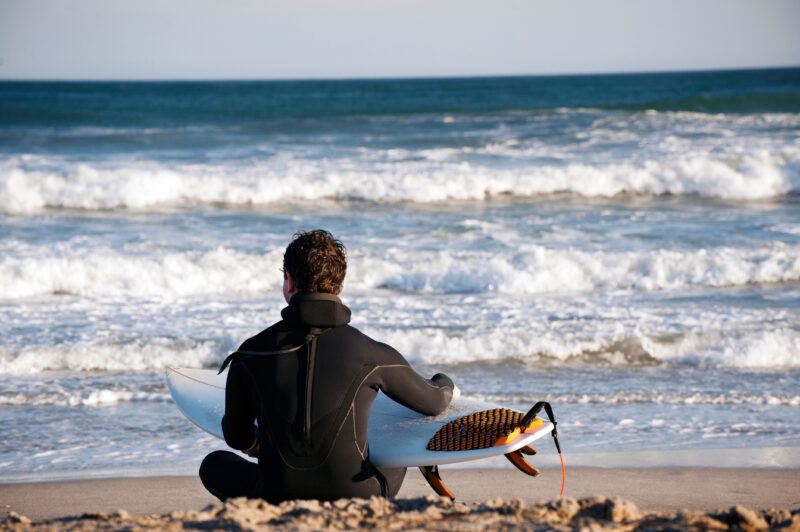
North Carolina surf culture blends Southern hospitality with hardcore dedication. Locals are friendly but serious about their breaks. Small surf shops, boardriders clubs, and beach cafés anchor the scene. The beginning of North Carolina’s surf history dates back to the 1950s, when early surf culture emerged alongside the state’s other historical milestones. North Carolina’s unique surf culture is deeply connected to its broader historical legacy, which includes not only pirate legends and Civil War forts but also the world-famous site of Kitty Hawk, where the Wright brothers achieved the first controlled flight. Exploring beyond the surf adds depth to the trip and highlights North Carolina’s rich cultural heritage.
Cell Coverage and Wi-Fi
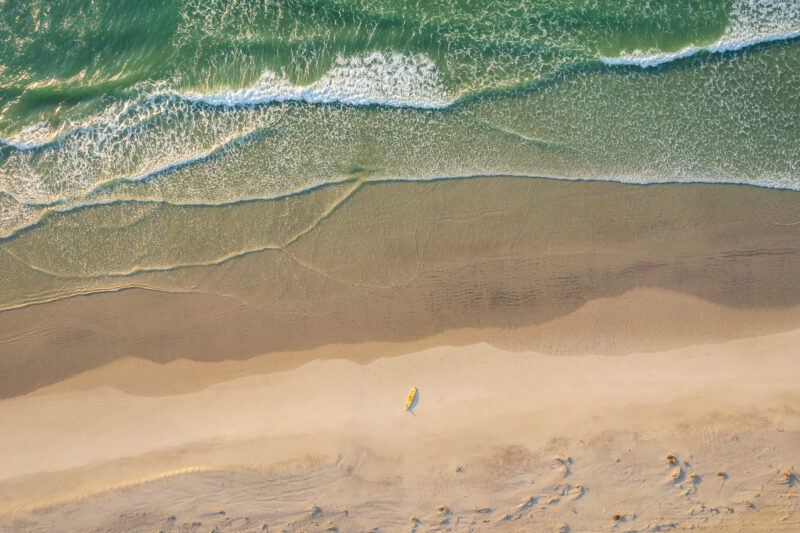
Coverage is strong in towns like Nags Head, Wrightsville, and Carolina Beach, but can be patchy in remote OBX stretches. Wi-Fi is available in hotels, rentals, and cafés, but expect slower speeds in rural areas.
Final Thoughts
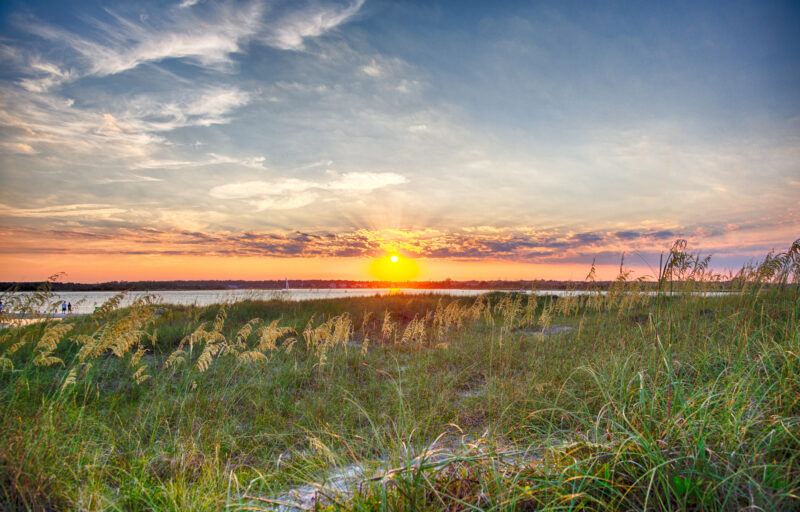
North Carolina is one of the East Coast’s most underrated surf destinations. With the Outer Banks delivering world-class beach breaks, Wrightsville providing consistent fun for all levels, and the Crystal Coast offering empty waves, it’s a diverse and rewarding surf trip.
The surf here is seasonal and sometimes fickle, but when the hurricanes light up the sandbars, North Carolina delivers unforgettable sessions. Add in the southern charm, natural beauty, and raw Atlantic power, and it’s a surf destination every US surfer should experience at least once. Make sure to visit North Carolina to enjoy its diverse surf experiences and stunning natural attractions.





